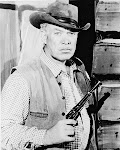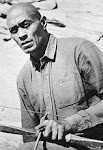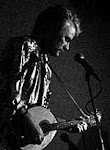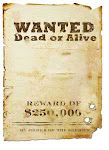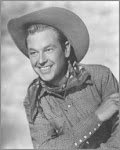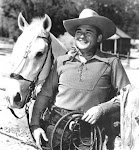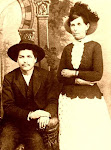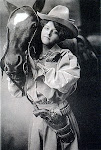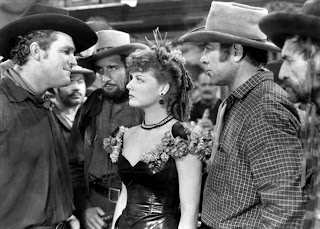Wednesday, December 22, 2010
3 Godfathers (1948)
3 Godfathers (1948). Directed by John Ford and filmed primarily in Death Valley. Cast: John Wayne, Harry Carey Jr., Pedro Armendáriz, Mildred Natwick, Ward Bond, Mae Marsh, Jane Darwell, Guy Kibbee and Hank Worden. The screenplay, written by Frank S. Nugent and Laurence Stallings, is based on the novel of the same name written by Peter Kyne. Ford had already adapted the film once before in 1919 as Marked Men. The original silent adaptation by Ford is thought to be lost today. The story is something of a re-telling of the story of The Three Wise Men in an American western context.
Cattle rustlers Robert Hightower, Pedro 'Pete' Rocafuerte, and William Kearney rob a bank in the town of Welcome, Arizona, but Kearney is shot and they have to run into the desert for cover, with the the posse hot on their heels.
They lose their horses in a desert storm and end up walking searching for water, they come across a water hole, which has been destroyed. Near by, they find in a covered wagon a dying woman, who is about to give birth. With the help of the 3 men, she has a boy, whom she names Robert William Pedro after them. She makes the men promise that they will take care of her baby boy. The three desperado's do everything they can to keep their promise.
This is a wonderful Christmas Movie where the bible plays a major role. Excellent performances by john Wayne, Armendariz and Carey, Jr.. Ward Bond is excellent as the relentless Marshal.
Fun Fact:
This film was dedicated to John Ford's friend and early star, Harry Carey, whose son Harry Carey Jr. played one of the title roles. Tokyo Godfathers is partly based on this film.
John Ford had a greensman water a cactus overnight to allow it to be squeezed for water.
John Wayne's character, Robert Marmaduke Hightower, was named by director John Ford after his favorite stuntman, Bryan 'Slim' Hightower, who also worked on this picture.
John Wayne was badly sun burnt while filming 3 Godfathers (1948) and was briefly hospitalized.
Mae Marsh (born Mary Wayne Marsh, November 9, 1894– February 13, 1968) , her career spanned over 50 years. Marsh worked as a salesgirl and waited around the sets and locations while her older sister worked on a films. She first started as an extra and played her first starring role in the film, Ramona (1910) at the age of 15.
Marsh worked with D.W. Griffith in small roles when they were filming in California and in New York. Her big break came when Mary Pickford, refused to play the bare-legged, grass-skirted role of Lily-White in Man's Genesis.
Working with Mack Sennett and D.W. Griffith, she appeared in eight movies a year and often paired with Robert Harron in romantic roles. In The Birth of a Nation (1915) and In Intolerance (1916).
Marsh's last notable starring role was as a flapper for Griffith in, The White Rose(1923) with Ivor Novello and Carol Dempster. She re-teamed with Novello in 1925 for the film version of his hit stage play, The Rat.
Marsh returned from retirement to appear in "talkies" and played a role in Henry King’s remake of Over the Hill (1931). She began to perform in character roles. Rebecca of Sunnybrook Farm (1932) and Little Man, What Now? (1934). She also became a favorite of director John Ford, appearing in The Grapes of Wrath (1940), How Green Was My Valley (1941), 3 Godfathers (1948), and The Searchers (1956).
Sunday, December 19, 2010
The Virginian(1929).
In 1925 the beginning of Gary Cooper acting career, he found work as an "extra", usually cast as a cowboy. It is reported that he has uncredited role in the Tom Mix Western, Dick Turpin (1925). The following year, he had screen credit in, Lightnin' Wins. After the release of this short film, Cooper accepted a contract with Paramount Pictures. He changed his name to Gary in 1925, following the advice of casting director Nan Collins.
"Coop," went on to perform in over 100 films. He became a major star with his first sound picture, The Virginian(1929). Cast: Gary Cooper, Walter Huston, Richard Arlen, Mary Brian, Chester Conklin and Eugene Pallette. Location: Filmed in City of Sonora, CA .
The film begins when, Virginian a foreman, working on small ranch and his best friend Steve, soon become rivals for a school teacher. Steve joins up with bad guy Trampas and the Virginian catches him cattle rustling. As foreman, he must give the order to hang his friend. Trampas gets away, but .. returns in time for a shootout .
Friday, November 26, 2010
Ride, Vaquero! (1953).
Ride, Vaquero! (1953). Directed by John Farrow and produced by Stephen Ames from a screenplay by Frank Fenton and John Farrow. The music score was by Bronislau Kaper and the cinematography by Robert Surtees. The film stars Robert Taylor, Ava Gardner, Anthony Quinn, and Howard Keel with Kurt Kasznar, Ted de Corsia and Jack Elam. Movita appears uncredited in a small role.
Roughen Mexican bandit leader Jose Esqueda, warns the people in his village that they are about to lose their land to the homesteading "Americans", he promises his people to burn them out. Rio, an American who was raised by Esqueda's mother does not stand behind his brother. The first hacienda that is burned down is the home of rancher King Cameron for his wife Cordelia. Risking his life Cameron organizes a meeting to stop Esqueda's raids. Esqueda and Rio also attended the meeting, and when Cameron calls Esqueda a "murderer, a thief and a coward,"Jose only laughs at the insult. Cameron returns home and rebuilds his house, Esqueda sends Rio and his men to burn it down again. Father Antonio, the village priest, warns Cameron that Esqueda is planning an attack on his property and helps fight them off. The battle ends with the arrival of the soldiers and Rio is captured by Cameron. Instead of turning Rio over to the soldiers, Cameron makes a deal with him, to help bring horses over from Mexico. Even though Cordelia believes that Rio should not be trusted, the two men leave for Mexico. As the situation begins to get out of hand, will a the two brothers face each other in a showdown?
I loved the scenery in this film (Kanab, Utah). Also I think this is one of Quinn's best performances. Taylor plays the handsome hero very well. Ava Gardner's performance was equally as good. This maybe one of those underrated westerns.
 Anthony Quinn (April 21, 1915 – June 3, 2001) was a Mexican-American actor, as well as a painter and writer. He starred in many successful films: Zorba the Greek, Lawrence of Arabia, The Guns of Navarone, The Message and Federico Fellini's La strada. He won the Academy Award for Best Supporting Actor twice; for Viva Zapata!(1952) and Lust for Life (1956).
Anthony Quinn (April 21, 1915 – June 3, 2001) was a Mexican-American actor, as well as a painter and writer. He starred in many successful films: Zorba the Greek, Lawrence of Arabia, The Guns of Navarone, The Message and Federico Fellini's La strada. He won the Academy Award for Best Supporting Actor twice; for Viva Zapata!(1952) and Lust for Life (1956).Wednesday, November 17, 2010
Monday, October 18, 2010
Virginia City (1940).
Virginia City(1940). Cast: Errol Flynn, Miriam Hopkins and Randolph Scott, and featuring a mustachioed Humphrey Bogart in the role of the real-life outlaw John Murrell (Which is worth seeing the movie alone). The film was directed by Michael Curtiz, who also directed such film classics as The Adventures of Robin Hood and Casablanca.
Union officer Kerry Bradford, escapes from a Confederate prison after learning that the rebels plan to smuggle five million dollars in gold from Virginia City, Nevada, to Texas, to help the Confederates.
Bradford reports to Union headquarters and is sent to Virginia City, to find out where the gold is being kept. On the stagecoach, he meets and falls in love with Julia Hayne, who is a dance-hall girl and spy. Also on the stagecoach is a gun salesman, John Murrell, leader of a gang of bandidos. Bradford out smarts him and his gang and they leave with out the gold. Murrell also escapes by jumping into a river.
After the stage reaches Virginia City, Julia goes looking for Irby to warn him, who has been sent to manage the gold-smuggling operation. Bradford follows Irby to the hideout, behind a false wall in a blacksmiths' shop, but only finds that the gold has been moved .
Irby meets with the town doctor when Murrell shows up,needing him to set his broken arm. Irby offers Murrell $10,000 to attack the garrison. While the soldiers' backs are returning gunfire, Irby's men smuggle the gold out. Irby has Julia arrange a meeting between the two men so he can take Bradford prisoner.
The rebels' wagon train reaches a Union outpost, where they start a gunfight, and in the confusion Bradford escapes. Irby and his men, are hot on his heels when he rides his horse down a steep hill and ends up somersaulting down the hill. The rebels, leave him for dead. The train is traveling toward Texas, while Bradford sends a telegraph to the garrison. The major in charge of the garrison does not take his warning serious, so the chase falls ever further behind .
Murrell and his bandidos return, circling the wagons in a canyon, the rebels and their gold can not be found, when Bradford and his men arrive. Irby is wounded in the fight, but Bradford's and the rebels drive off the bandits. That night, knowing that in the morning both Murrell and the Union garrison will arrive, Bradford takes the gold from the wagons and hides it in the canyon.
The major and his men arrive just in time to ward off the bandits' attack, Bradford denies the gold ever existed. He is brought up in a court-martial, where he defends his actions by explaining that while, as a soldier, he knows the gold might be used to end the war. The court finds him guilty of high treason and sentences him to death .
On the day before Bradford's execution, Julia meets with the President and pleads for his life. Lincoln reveals that at that very moment, Generals Lee and Grant are meeting at the Courthouse to end the war. Will Lincoln pardon Bradford in time?
VIRGINIA CITY, is avery enjoyable western and is available in a Flynn western box set which also features: "San Antonio", "Montana" and the wonderful "Rocky Mountain".
Union officer Kerry Bradford, escapes from a Confederate prison after learning that the rebels plan to smuggle five million dollars in gold from Virginia City, Nevada, to Texas, to help the Confederates.
Bradford reports to Union headquarters and is sent to Virginia City, to find out where the gold is being kept. On the stagecoach, he meets and falls in love with Julia Hayne, who is a dance-hall girl and spy. Also on the stagecoach is a gun salesman, John Murrell, leader of a gang of bandidos. Bradford out smarts him and his gang and they leave with out the gold. Murrell also escapes by jumping into a river.
After the stage reaches Virginia City, Julia goes looking for Irby to warn him, who has been sent to manage the gold-smuggling operation. Bradford follows Irby to the hideout, behind a false wall in a blacksmiths' shop, but only finds that the gold has been moved .
Irby meets with the town doctor when Murrell shows up,needing him to set his broken arm. Irby offers Murrell $10,000 to attack the garrison. While the soldiers' backs are returning gunfire, Irby's men smuggle the gold out. Irby has Julia arrange a meeting between the two men so he can take Bradford prisoner.
The rebels' wagon train reaches a Union outpost, where they start a gunfight, and in the confusion Bradford escapes. Irby and his men, are hot on his heels when he rides his horse down a steep hill and ends up somersaulting down the hill. The rebels, leave him for dead. The train is traveling toward Texas, while Bradford sends a telegraph to the garrison. The major in charge of the garrison does not take his warning serious, so the chase falls ever further behind .
Murrell and his bandidos return, circling the wagons in a canyon, the rebels and their gold can not be found, when Bradford and his men arrive. Irby is wounded in the fight, but Bradford's and the rebels drive off the bandits. That night, knowing that in the morning both Murrell and the Union garrison will arrive, Bradford takes the gold from the wagons and hides it in the canyon.
The major and his men arrive just in time to ward off the bandits' attack, Bradford denies the gold ever existed. He is brought up in a court-martial, where he defends his actions by explaining that while, as a soldier, he knows the gold might be used to end the war. The court finds him guilty of high treason and sentences him to death .
On the day before Bradford's execution, Julia meets with the President and pleads for his life. Lincoln reveals that at that very moment, Generals Lee and Grant are meeting at the Courthouse to end the war. Will Lincoln pardon Bradford in time?
VIRGINIA CITY, is avery enjoyable western and is available in a Flynn western box set which also features: "San Antonio", "Montana" and the wonderful "Rocky Mountain".
Wednesday, September 29, 2010
True Grit (2010) trailer is awesome!
Can't wait for Christmas to see this. Sounds and looks very good.
Sunday, August 29, 2010
Henry Fonda

Henry Fonda, began his acting career on stage as a Broadway actor. He made his first Hollywood film in 1935. He became well known after his Academy Award-nominated performance as Tom Joad in The Grapes of Wrath(1940), an adaptation of John Steinbeck's novel about an Oklahoma family who moved west. Over six decades in Hollywood, Fonda had amazing performances in the films, The Ox-Bow Incident, Mister Roberts and 12 Angry Men. Later, Fonda performed in a very different role in the film, Once Upon a Time in the West and a much lighter role in family comedies like Yours, Mine and Ours.
Fonda comes from of a family of famous actors, daughter Jane Fonda, son Peter Fonda, granddaughter Bridget Fonda, and grandson Troy Garity.
One of my favorite Henry Fonda movies that TCM is featuring is, Fort Apache(1948). Western film directed by John Ford and starring John Wayne and Henry Fonda. The film was the first of the director's "cavalry trilogy" and was followed by She Wore a Yellow Ribbon (1949) and Rio Grande (1950), both starring Wayne. The story, which screenwriter James Warner Bellah based loosely on George Armstrong Custer and the Battle of Little Bighorn, was one of the first to show an authentic and sympathetic view of the Native Americans involved in the battle.
Some of the film's location shooting were in, Monument Valley, Utah. The exteriors involving the fort itself and the renegade Indian agent's trading post were filmed at the Corriganville Movie Ranch.
Friday, August 27, 2010
Olivia De Havilland and Errol Flynn

Olivia De Havilland and Errol Flynn were known as one of Hollywood's most talented on-screen couples, performing in eight films together, but, were never romantically involved. The films in which they co-starred: Captain Blood (1935), The Charge of the Light Brigade (1936), The Adventures of Robin Hood and Four's a Crowd (1938), Dodge City(1939). Directed by Michael Curtiz and based on a story by Robert Buckner. As a classic western, it tells the story of the rise, after the end of the Civil War, of the frontier post of Dodge City, Kansas to civilized town and trading place for cattle. In the process, Dodge City has to get rid of the bad guys terrorizing the citizens, and it takes a new sheriff and his deputy to clean up the town.
The Private Lives of Elizabeth and Essex (1939), Santa Fe Trail (1940) and They Died with Their Boots On (1941).
De Havilland stated, "He never guessed I had a crush on him. In fact, I read that he was in love with me when we made The Charge of the Light Brigade the next year, in 1936. I was amazed to read that, for it never occurred to me that he was smitten with me, too, even though we did all those pictures together." However, in an interview cited on Turner Classic Movies De Havilland claims she knew the crush was reciprocal and that when Flynn proposed, he was still married to actress Lili Damita.
Thursday, August 19, 2010
The remake of the film "True Grit" .

The "True Grit" remake, is directed by the Coen brothers. Jeff Bridges, is going to play the same role that won John Wayne an Oscar for the 1969 original.
The story centers on a 14-year-old girl (Hailee Steinfeld) who joins the aging US marshal, Rooster Cogburn , and another lawman to track the outlaw who killed her father. The original told the story from Cogburn's point of view, but the new version will be from the viewpoint of the girl.
The new movie will be closer to the Charles Portis novel on which the original film was based. It co-stars Matt Damon and Josh Brolin, and is scheduled to hit theaters this Christmas (December 25th).
Cast:
 Matt Damon ... La Boeuf
Matt Damon ... La Boeuf Jeff Bridges ... Marshal Reuben J. Cogburn
Jeff Bridges ... Marshal Reuben J. Cogburn Josh Brolin ... Tom Chaney
Josh Brolin ... Tom Chaney Barry Pepper ... 'Lucky' Ned Pepper
Barry Pepper ... 'Lucky' Ned Pepper  Domhnall Gleeson ... Moon
Domhnall Gleeson ... Moon Hailee Steinfeld ... Mattie Ross
Hailee Steinfeld ... Mattie Ross
Tuesday, August 10, 2010
Happy Birthday Rhonda Fleming
Happy Birthday to actress Rhonda Fleming (1923-present) who turns 87 today as she is still alive. While the famous redhead has appeared in such notable films such as Spellbound (1945), Out Of The Past (1947), and The Spiral Staircase (1945), she made a mark in several classic westerns. Those films include Gunfight at the OK Corral (1957) with Burt Lancaster and Kirk Douglas; Pony Express (1953), Alias Jesse James (1959) with Bob Hope, The Redhead and the Cowboy (1951) and Gun Glory (1957).
Thursday, August 5, 2010
Woody Strode.

Woody Strode, was a decathlete and football star who went on to become a pioneering African-American film actor. He is probably best remembered for his brief Golden Globe-nominated role in Spartacus (1960). Strode made his first film performance in the film, in Sundown (1941). Woody Strode, became more active in the 1950s. He played dual roles (billed as "Woodrow Strode") in The Ten Commandments (1956) as an Ethiopian king as well as a slave, and in 1959 portrayed Private Franklin in Pork Chop Hill. He performed once on Johnny Weismuller's 1955-1956 television series, Jungle Jim.
Strode performed as villains opposite three screen Tarzans. Tarzan's Fight for Life(1958). He was cast opposite Jock Mahoney's Tarzan as both the dying leader of an unnamed Asian country and that leader's brother, Khan, in Tarzan's Three Challenges(1963). In the late 1960s, he performed in many episodes of the Tarzan television series.
He became a close friend of director John Ford, who gave him the title role in Sergeant Rutledge (1960). Shot on location in Monument Valley, Utah. The film starred Strode as a black first sergeant in the United States Cavalry accused of the rape and murder of a white girl at a U.S. Army fort in the late 1880s. His defense is handled by Lt. Tom Cantrel, Rutledge's troop officer. The story is told through a series of flashbacks, through the testimony of witnesses as they describe what happened. Circumstantial evidence all points to, Sergeant Rutledge.
He also performed in the Ford films, Two Rode Together (1961), The Man Who Shot Liberty Valance (1962) and Seven Women (1966).
Strode performed in the films, The Last Voyage(1960), The Professionals(1966), Once Upon a Time in the West (1968). Soon after, he performed in many spaghetti Westerns. His starring role as Patrice Lumumba, in Seduto alla sua destra (released in the U.S. as Black Jesus), the film is largely forgotten now. He remained a popular actor throughout the '70s and '80s, and has become widely known as one of the important black film actors of his time. His last film was The Quick and the Dead (1995).
Saturday, July 24, 2010
The Out Law of Jose Wales(1976).

The Outlaw Josey Wales (1976). Directed by and starring Clint Eastwood, Chief Dan George, Sondra Locke, Sam Bottoms, and Geraldine Keams. The film was adapted by Sonia Chernus and Philip Kaufman from the novel The Rebel Outlaw: Josey Wales (republished in 1975 under the title Gone to Texas) by Forrest Carter. In 1996, the film was selected for preservation in the National Film Registry of the Library of Congress.
Josey Wales is a peaceful farmer and family man, until renegades murdered his family, and destroyed his farm. Fueled by hatred, he becomes an outlaw looking for vengeance on the men who took everything he had.
This is one of those movies, where you will find yourself caught up in the story of a man who goes willingly into, a life of hell.
Fun Facts:
Because of Chief Dan George's age, he would have trouble remembering his lines so during takes, Clint Eastwood would mouth his lines without realizing it and had to be told to stop because it would ruin the take.
Clint Eastwood says Josey as his personal favorite of all the movies he's made.
The first of sixth movies made by real-life couple Clint Eastwood and Sondra Locke.
 Kyle Eastwood, is an actor and jazz musician. He studied film at the University of Southern California for two years before going onto a music career. After becoming a session player in the early '90s and leading his own quartet, he released his first solo album, From There to Here, in 1998. His most recent album, Metropolitain, was released 2 June 2009 by Rendezvous. Eastwood plays acoustic and electric as well as double bass. He is the son of filmmaker and actor Clint Eastwood.
Kyle Eastwood, is an actor and jazz musician. He studied film at the University of Southern California for two years before going onto a music career. After becoming a session player in the early '90s and leading his own quartet, he released his first solo album, From There to Here, in 1998. His most recent album, Metropolitain, was released 2 June 2009 by Rendezvous. Eastwood plays acoustic and electric as well as double bass. He is the son of filmmaker and actor Clint Eastwood.Click to view Kyle Eastwood Website.
List of films:
Uncredited Kyle Eastwood (in film debut) can be glimpsed very briefly in the opening sequence helping his dad, Josey, work the land by their home.
Bronco Billy (1980) - orphan (uncredited)
Honkytonk Man (1982) - Whit Stovall
The Bridges of Madison County (1995) - James Rivers Band
L'Heure d'été (2007)
---------------------------------------------------------------------------------
Filming locations for The Outlaw Josey Wales:
Glen Canyon, Utah
Kanab Movie Ranch,Utah
Kanab, Utah
Lake Powell, Arizona
Mescal, Arizona
Old Tucson - Tucson, Arizona
Oroville, California
Paria, Utah
Wyoming
Wednesday, July 14, 2010
Filming Location: Gallup, New Mexico.

Gallup, New Mexico, was founded in 1881 as a railhead for the Atlantic and Pacific Railroad. The City was named after David Gallup, a paymaster for the Atlantic and Pacific Railroad. It is the most populous city between Albuquerque, New Mexico and Flagstaff, Arizona.Gallup is sometimes called the "Indian Capital of the World", for its location in the heart of Native American lands, and the presence of Navajo, Zuni, Hopi and other tribes. The historic El Rancho Hotel & Motel has hosted movie stars: John Wayne, Ronald Reagan, Humphrey Bogart, Spencer Tracy, Katharine Hepburn, Joan Crawford, Kirk Douglas, Doris Day, Gregory Peck and Burt Lancaster. The rugged terrain surrounding Gallup was popular with Hollywood filmmakers during the 1940s and 1950s for the on-location shooting of Westerns. Actors and film crews would stay at the hotel during filming. Films made in Gallup included Billy the Kid (1930), Pursued (1947), The Sea of Grass (1947), Four Faces West (1948),Rocky Mountain (1950), Only the Valiant (1951), Ace in the Hole (1951), Escape from Fort Bravo (1953), A Distant Trumpet (1964) and The Hallelujah Trail (1965).
Ace in the Hole (1951). Cast: Kirk Douglas as a disgraced reporter, who stops at nothing to try to land a job on a major newspaper.
Rocky Mountain(1950)

Rocky Mountain (1950). Director: William Keighley. cast: Errol Flynn. It takes place during the American Civil War.
A small group of the Confederate cavalry, led by Captain Barstow, crosses the California state line. The soldiers are under orders from General Robert E. Lee to meet with outlaw Cole Smith, in order to convince him and his men to fight on the side of the South. They decide to meet at Rocky Mountain, also known as Ghost Mountain. When Barstow and his men are waiting for them, they see a war party of Indians attack a stagecoach. Barstow's men ride to help and return with the driver, and his passenger, Johanna Carter, who is on the way to join her fiancee, Union soldier Lt. Rickey. During the night, the Indians burn what is left of the stage, and the following morning, a small group of Union soldiers and Shoshone scouts come across the burnt stage. Barstow and his men capture Rickey and his soldiers. Barstow learns that the Union knows is looking for them. Smith leaves to get help. He tells Barstow that the Indians will escape and return with their tribe. That night, while Jimmy is on watch, the Indians make a run for it. The soldiers kill only two of them. That night, Rickey escapes, leaving Johanna behind. The following morning, the men find Smith's horse and realize that he has been killed. Now that the men know no help is coming and they decide to fight the Indians while Johanna and Craigie try and escape.
It has a very good beginning and a exciting and very emotional ending. Errol Flynn is perfect for the role of a man who has seen too much war. In real life, Flynn and several of the co-stars were very good horsemen.
Fun Facts:
Slim Pickens' movie debut.
Errol Flynn's last western.
Filming Location: Gallup, New Mexico.
 Patrice Wymore's first film performance was in the 1950 film Tea for Two, starring Doris Day and Gordon MacRae. That same year she performed opposite Errol Flynn in Rocky Mountain, with whom she would become romantically involved. The two married in October 1950. Wymore continued to act, performing in. I'll See You in My Dreams, her second film alongside Doris Day. She also guest stared as herself in the 1951 film Starlift, performing the song "Liza (All the Clouds'll Roll Away)." In 1953, she performed with Virginia Mayo in, She's Back on Broadway, and that same year she starred opposite Randolph Scott in The Man Behind the Gun. In 1955 she performed with her husband Errol Flynn and Anna Neagle in King's Rhapsody. Following Flynn's death, Wymore returned to acting, mostly in musicals; Carnival!, Guys and Dolls, Irma La Douce, Gentlemen Prefer Blondes and Ocean's Eleven in 1960. In 1965, she was cast in the soap opera Never Too Young, and in 1966 she performed in the film Chamber of Horrors. Her last performance was on the television series F Troop in 1967.
Patrice Wymore's first film performance was in the 1950 film Tea for Two, starring Doris Day and Gordon MacRae. That same year she performed opposite Errol Flynn in Rocky Mountain, with whom she would become romantically involved. The two married in October 1950. Wymore continued to act, performing in. I'll See You in My Dreams, her second film alongside Doris Day. She also guest stared as herself in the 1951 film Starlift, performing the song "Liza (All the Clouds'll Roll Away)." In 1953, she performed with Virginia Mayo in, She's Back on Broadway, and that same year she starred opposite Randolph Scott in The Man Behind the Gun. In 1955 she performed with her husband Errol Flynn and Anna Neagle in King's Rhapsody. Following Flynn's death, Wymore returned to acting, mostly in musicals; Carnival!, Guys and Dolls, Irma La Douce, Gentlemen Prefer Blondes and Ocean's Eleven in 1960. In 1965, she was cast in the soap opera Never Too Young, and in 1966 she performed in the film Chamber of Horrors. Her last performance was on the television series F Troop in 1967.
Sunday, July 11, 2010
Hopalong Cassidy


Hopalong Cassidy is a cowboy hero, created in 1904 by Clarence E. Mulford who wrote the stories and 28 novels. The character appears as a rude, dangerous and rough-talking "galoot". Beginning in 1935, the character, played by William Boyd, was transformed into the clean-cut hero in 66 films, only a few of which were based on Mulford's works. Mulford actually rewrote his earlier stories to fit the movie and these led in turn to a comic book series modeled after the films.
She Wore a Yellow Ribbon(1949)

She Wore a Yellow Ribbon(1949). Director: John Ford. Cast: John Wayne. The film was the second of Ford's trilogy of films focusing on the US Cavalry (and the only one in color), the other two films being Fort Apache (1948) and Rio Grande (1950).
Known for its breathtaking views of Monument Valley. Cinematographer, Winton Hoch, won the 1950 Academy Award for Best Color Cinematography. Ford and Hoch based much of the film's imagery on the paintings and sculptures of Frederic Remington.
Ford demonstrated a number of standard Cavalry procedures in horse management in this and other movies. Strict rotation between walk, trot, and leading the horses made them last as long as possible. They were still no match for the lightly burdened Indian horses for endurance, but US Cavalry horses were fed grain (when available), and this helped even the odds a bit.
The film is named after a song common in the U.S. military, "She Wore a Yellow Ribbon".
After the death of General Custer at Little Big Horn, a government stagecoach crossing the southwest desert is attacked and robbed. Capt. Nathan Brittles, who in charge the Seventh Cavalry at Fort Stark, is concerned that the attackers were Cheyenne Indians, because the Cheyenne rarely travel so far south.
Later, while thinking aloud by his wife Mary's grave, Nathan, who is retiring from the Army in six days, knows that his last mission will be to drive the Cheyenne back north.
The next day, Nathan's commander, Major Allshard, orders him to escort his wife Abby and niece, Olivia Dandridge, to Sudros Wells, where they are to catch a stagecoach to take them back East.
After registering a formal complaint with Allshard, Nathan leads the large patrol from the fort. When rival suitors Lt. Clint Cohill and Lt. Ross Pennell, see Olivia with a yellow ribbon in her hair each wonder if she is wearing the ribbon in their honor. Will Nathan complete his mission and safely deliver the two women?
In my opinion the film SHE WORE A YELLOW RIBBON is the kind of film you can watch again and again, and still find it interesting. If you haven't seen it yet, you're in for a treat!
Fun Facts:
When Sgt. Quincannon (Victor McLaglen) is addressing the troops and warning them to "watch them words," he asks who owns a dog, without receiving an answer. He concludes, "Nice dog! Irish setter!" The scene was improvised on the spot by director John Ford. The dog was an unnamed Navajo pet that had fallen asleep during the setup. Multiple takes were required because McLaglen kept blowing the line, calling the dog a "cocker spaniel."
Based on the paintings and illustrations of Frederic Remington, the artist renowned for his nostalgic packaging of the bygone "real" West.
Sergeant Tyree's horse is named "Laddie".
The exterior shots of Capt. Brittle quarters and the building where Major Mac Allshard, Commanding Officer Fort Starke has his HQ are still standing and in Monument Valley itself near to the town of Kanab. The HQ building is now a museum and both are open to the public.
As the regiment's blacksmith, named "Wagner", is seen at work, we can hear the orchestra playing the "Nibelung"-motif from Richard Wagner's famous opera, "Siegfried". In the opera the motif is connected with the forging of Siegfried's sword.
John Ford decided to cast John Wayne as Captain Nathan Brittles after seeing his performance as Thomas Dunson in Red River (1948).
According to Patrick Wayne, this was his father's favorite of the movies he starred in.
John Wayne, who was 41 when the film was made, won great acclaim for his convincing portrayal of the 60-year-old Captain Brittles.
In the graveyard, one of the crosses carries the name "DeVoto", this is likely an homage to Bernard DeVoto, a historian of the American West.
The horse that Ben Johnson rode in this film was a famous movie horse used by many stars in many 40s and 50s movies. It was a big sorrel stallion called "Steel" and was owned by Ben Johnston's father in law "Fat Jones" who ran one of the most successful horse renting stables in Hollywood. The horse, which was known for being very quiet but flashy, was ridden by John Wayne in "Tall in the Saddle" and "The Conqueror", Gregory Peck in "Yellow Skies" and Clark Gable in "The Tall T". The horse made stars look like good riders and Fat Jones always insisted if "Steel" was used in movies, the company hired every other horse used in the movie from his stable, so "Steel" was worth a fortune to him. "Steel" had his own double and the horse that Ben Johnston rides in the galloping scenes was not "Steel" but a spectacular galloper called "Bingo". "Steel" was no movie prima donna however. Ben Johnston also rode him when he won his world champion calf roping title. Ben Johnston also rode both "Steel" and "Bingo" in "Wagonmaster".
 Joanne Dru, is best known for her performances in western films such as Howard Hawks's Red River (1948), and John Ford's She Wore a Yellow Ribbon (1949) and Wagon Master (1950). Joanne Dru, was the older sister of entertainer Peter Marshall.
Joanne Dru, is best known for her performances in western films such as Howard Hawks's Red River (1948), and John Ford's She Wore a Yellow Ribbon (1949) and Wagon Master (1950). Joanne Dru, was the older sister of entertainer Peter Marshall.
Monday, July 5, 2010
Audie Leon Murphy

Audie Leon Murphy, was the most decorated United States soldier of World War II during his twenty-seven months in action. He received the Medal of Honor, the U.S. military highest award for valor, along with 32 additional U.S. and foreign medals and citations, including five from France and one from Belgium.
When Audie Murphy came back from fighting in the War, Variety Clubs was financing a film to be called Bad Boy to help promote the organization's work with troubled children, but the president of Allied Artists did not want to cast someone with not much acting experience in a major role.
By this time, Texas theater owners had decided that Audie Murphy was going to play the lead or they weren't financing the film. Their money talked and he was cast, turning in such a fine performance that the Hollywood recognized his talent. Soon, Universal Studios signed Murphy to his first seven-year contract. After a few box-office hits, the studio allowed Audie to choose his roles, as long as plenty of action was included in the films.

In the 25 years he spent in Hollywood, Audie Murphy made 44 feature films, 33 of them Westerns. He is best known for the book and then film, To Hell and Back. He also appeared in several television shows, including the lead in the short-lived 1961western detective series Whispering Smith, set in Denver, Colorado. For his contribution to the motion picture industry, Audie Murphy has a star on the Hollywood Walk of Fame at 1601 Vine Street.
In addition to acting, Murphy also became successful as a country music songwriter. teaming up with such talented musicians and composers as Guy Mitchell, Jimmy Bryant, Scott Turner, Coy Ziegler, and Terri Eddleman. Murphy's songs were recorded and released by such performers as Dean Martin, Eddy Arnold, Charley Pride, Jimmy Bryant, Porter Waggoner, Jerry Wallace, Roy Clark, and Harry Nilsson. His two biggest hits were "Shutters and Boards" and "When the Wind Blows in Chicago".
Audie Murphy Fun Fact: He owned ranches in Texas, Tucson, Arizona and Menifee, California.
Gunsmoke, is a Western drama series created by director Norman MacDonnell and writer John Meston. The stories take place in and around Dodge City, Kansas, during the settlement of the American West.
To be continued..
Sunday, July 4, 2010
Alan Ladd

Alan Ladd and Robert Preston performed in the western film, Whispering Smith(1948). Alan Ladd plays a railroad detective who is hired to stop a gang of train robbers. It is based on a novel by Frank H. Spearman and a previous 1926 film starring H.B. Warner in the title role with Lillian Rich, Lilyan Tashman, John Bowers, and Eugene Pallette as supporting cast.

In 1961, Whispering Smith became a 20-episode NBC series of the same name, with Audie Murphy, a film star and World War II hero, in the title role.
In (1953)Ladd played the title role in the 1953 western Shane. The film was nominated for five Academy Awards, including Best Picture. It was listed at No. 45 on the American Film Institute's 2007 ranking of "100 Years ... 100 Movies."
Alan Ladd has a star on the Hollywood Walk of Fame at 1601 Vine Street. His handprint appears in the forecourt of Grauman's Chinese Theater, in Hollywood.
Shane (1953)

Shane(1953). Produced and directed by George Stevens from a screenplay by A.B. Guthrie Jr., based on the 1949 novel of the same name by Jack Schaefer. Cast: Alan Ladd, Jean Arthur and Van Heflin and features Brandon De Wilde, Elisha Cook Jr., Jack Palance and Ben Johnson. The cinematography was by Loyal Griggs, with a music score by Victor Young.
A young Joey Starrett watches while a man on a horse approaches the house, then listens as Shane, talks to his father Joe that he is heading north, toward home.
When Joey cocks his rifle, Shane, startled by the noise, draws his gun with the speed of a gunslinger. Joe not liking what he saw, sends Shane on his way, as a group of men ride up. The men's leader, cattle baron Rufe Ryker, accuses Joe of squatting on his land and demands that he leave, giving up his homestead. Joe refuses, Ryker's men start trouble until Shane suddenly is standing at Joe's side.
The men leave and Joe's wife Marian, who saw everything, urges Joe to invite Shane to dinner. Joey is happy to have Shane spend the evening with them, Shane, really does not want talk about his past, goes outside to chop wood.
Joe joins him and the next day, the two men team up to pull a tree stump out of the ground. Later, Joey tells Shane that his parents want him to stay and shares with him that his father is worried about Ryker's threats. Shane, who has put away his gun, agrees to remain and help the family save their homestead.
Loved how they used the Grand Teton Mountains as a scenic backdrop in the movie Shane, one of my favorite western films. I thought the film was very realistic looking. For instance the scene in Grafton's saloon is dark and moody, far different from the colorful dance halls in other Westerns.
Fun Facts:
At the time of filming, Jack Palance was not comfortable with horses. The one good mount he achieved during the numerous takes was used in the film.
The last film of Jean Arthur.
Jean Arthur was over 50 years old when she played Marian Starrett - she was, in fact, ten years older than Emile Meyer, who plays grizzled old cattle baron Rufus Ryker.
Shane's fancy gun twirling in the climactic showdown was actually performed by Rodd Redwing. Earlier, when Shane demonstrates his prowess for Joey, and it is clearly Alan Ladd himself on camera, the actor had been given a different, easier-to-use revolver for the scene.
Wednesday, June 16, 2010
Ben Johnson

Ben Johnson, was a ranch hand and would travel with his father on the rodeo circuit, as a Professional Rodeo Cowboys Association's Steer Roping World Champion in 1953. Johnson was inducted into the Professional Rodeo Cowboys Association's ProRodeo Hall of Fame in 1973.
His career began with the Howard Hughes film, The Outlaw. Before filming began, Hughes bought some horses at the Oklahoma ranch that Johnson's father managed, and hired Johnson to get the horses to northern Arizona (for The Outlaw's location shooting), and then to take them on to Hollywood.
Once in Hollywood he did stunt work for the movie, The Fighting Gringo(1939), and throughout the 1940s he found work wrangling horses and doing stunt work.
His work as a stunt man caught the eye of director John Ford, who hired Johnson for stunt work in the movie, Fort Apache(1948), and as the riding double for Henry Fonda. During shooting, the horses pulling a wagon with three men in it stampeded. Ben being at the right place at the right time stopped the runaway wagon. Ford then promised that he would be rewarded, Johnson hoped it would be with another doubling job, instead he received a seven-year acting contract from Ford.
His first credited role was in one of my favorite films, 3 Godfathers(1948). Directed by John Ford and filmed (although not set) primarily in Death Valley. The screenplay, written by Frank S. Nugent and Laurence Stallings, is based on the novel of the same name written by Peter Kyne. Ford had already filmed the story once before in 1919 as, Marked Men. The original silent version by Ford is thought to be lost today. The story is a re-telling of the story of The Three Wise Men in a western theme.
Ford suggested him for a starring role in the film, Mighty Joe Young(1949). Ford cast him in two of the three films that have come to be known as Ford's cavalry trilogy, all starring John Wayne: She Wore a Yellow Ribbon (1949), and a another favorite of mine, Rio Grande (1950). The story is about, Lt. Col. Kirby Yorke, who is posted on the Texas frontier to defend settlers against the attack of Apaches. Col. Yorke comes under stress because of serious shortage of troops.
Too add to his problems Yorke's son, Trooper Jeff Yorke, is one of 18 recruits sent to the regiment. He has flunked out of West Point and enlisted as a private in the Army. Not wanting to give the impression that he is showing favoritism towards his son, Col. Yorke ends up being harder on his son than he is with the others. Jeff is befriended by a pair of older recruits, Travis Tyree (Ben Johnson) (who is on the run from the law) and "Sandy" Boone (Harry Carey, Jr.), who take him under their wings.
In 1950, Ford also cast Johnson as the lead in Wagon Master (1950), a small film that was one of Ford's favorites.
Johnson played in supporting roles in Shane (1953), One Eyed Jacks (1961), Cheyenne Autumn(1964), Major Dundee (1965), The Wild Bunch, The Getaway, Junior Bonner (both 1972), Dillinger, Red Dawn(1984), Bite the Bullet(1975), Breakheart Pass(1975).
In the 1966-1967 television season, Johnson performed as the character "Sleeve" in all twenty-six episodes of the Western, The Monroes with costars Michael Anderson, Jr., and Barbara Hershey.
He teamed up John Wayne again, and director Andrew McLaglen, in two films; performing with with Rock Hudson in The Undefeated (1969), and in a prominent role in Chisum (1970).
He acted in four films directed by Sam Peckinpah between 1965 and 1972. In between the four Peckinpah films Johnson would win an Academy Award for his performance as 'Sam The Lion' in The Last Picture Show, directed by Peter Bogdanovich co-starring Timothy Bottoms, Jeff Bridges and Cybill Shepherd.
He portrayed the character Cap Roundtree in the 1979 miniseries The Sacketts.
He also continued ranching during the entire time, operating a horse-breeding ranch in Sylmar, California. In addition, he sponsored the Ben Johnson Pro Celebrity Team Roping and Penning competition, held in Oklahoma City, the proceeds of which are donated to both the Children's Medical Research Inc., and to the Children's Hospital of Oklahoma.
Wagon Master(1950)

Wagon Master(1950). Director: John Ford. Cast: Ben Johnson, Harry Carey Jr., Joanne Dru, and Ward Bond.
Learning of their ability as experienced horsemen, Elder Wiggs, hires Travis Blue and Sandy Owens to guide a small group of Mormons across the West to the San Juan River country in southeastern Utah Territory.
Ford came up with the idea for the story, and Patrick Ford (John Ford's son) and Frank S. Nugent wrote the script. Ford and Merian C. Cooper, were co-executive producers, with Lowell J. Farrell as associate producer. Music was done by Richard Hageman.
Ford had been shooting the film She Wore a Yellow Ribbon the year before (1948) in Monument Valley, near the town of Mexican Hat, Utah, close to the locations where he had also filmed Stagecoach (1939), My Darling Clementine (1946), and Fort Apache (1948). He wanted a different look for his next film and drove to Moab. Wagon Master was shot in less than a month, in 1949, for less than a million dollars. Filmed in black and white, on location, mainly northeast of the town of Moab, Utah in Professor Valley (with additional shotting at Spanish Valley southwest of Moab, and a few stage shots were done at Monument Valley).
The television series Wagon Train (1957-1965), starring first Ward Bond and then John McIntire, was inspired by the film. (Ford directed one episode.)
Friday, June 11, 2010
The Harvey Girls (1946)

The Harvey Girls(1946). Based on a 1942 novel by Samuel Hopkins Adams about Fred Harvey's famous Harvey House restaurants. Director: George Sidney. Cast: Judy Garland, John Hodiak, Angela Lansbury, Virginia O'Brien, Ray Bolger, and Marjorie Main. It won an Academy Award for Best Song for "On the Atchison, Topeka and the Santa Fe", written by Johnny Mercer and Harry Warren.
A group of new waitresses for Harvey House restaurants, travel on the Atchison, Topeka & Santa Fe Railroad to the little town of Sandrock. Also traveling by train is Susan Bradley, who is is on her way to marry the man whose beautifully written letters letters swept her off her feet. Unfortunately, the man doesn't want to get married, so they agree to call it off. When she learns that the letters were written by the owner of the saloon, Ned Trent, she storms off to confront him and gives him a piece of her mind, which somehow he finds very attractive.
Now needing a job, Susan joins the Harvey Girls, and soon finds herself fighting against Trent's business partner, Judge Sam Purvis , who wants to close them down. Em, who is in love with Trent, sees Susan as her rival and the war is on.. You have to watch to see which girl wins her man.
I thought the film was Beautifully filmed, also..a wonderful supporting cast who all get a moment to shine including Ray Bolger, Virginia O'brien, Marjorie Main, a very young Cyd Charisse and a stunning 19 year old Angela Lansbury.
Fun Facts:
Angela Lansbury, is a singer in her own right, her voice was considered unsuitable for the character she played and her singing in the film was dubbed by Virginia Rees. Cyd Charisse, who had her first speaking role in the film, also had her singing dubbed, by Marion Doenges.
"On the Atchison, Topeka and the Santa Fe"
(uncredited)
Music by Harry Warren
Lyrics by Johnny Mercer
Sung by Ben Carter, Marjorie Main, Ray Bolger, Judy Garland and chorus
Danced by Ray Bolger
Wednesday, June 9, 2010
The Sons of Katie Elder(1965).

The Sons of Katie Elder(1965). Director: Henry Hathaway. Cast: John Wayne and Dean Martin. Filmed in Mexico.
The four sons of Katie Elder all meet in Clearwater, Texas, in for their mother's funeral. They all regret that they have not lived up to her high expectations of them.
The townspeople do not think much of the brothers, John a professional gunfighter, Tom has also ended up on the wrong side of the law as a gambler. Katie Elder was loved by everyone, all knew of her poverty and her love for her sons who neglected her. The brothers want to do something special for their mother, like help her keep her wish to send Bud to college, even though Bud wants to grow up to be like his brothers.
Morgan Hastings, now owns the Elders' ranch after their father death, claiming to have won it from him in a game of cards. He brings in a hired gun, Curley to help protect the ranch. When he learns about the brothers' investigations, Hastings frames them for murder of the sheriff.
I 'm writing this movie review to honor: Dennis Hopper, Dean Martin and John Wayne. Apart from the casting and music, much of the enjoyment of this film comes from the love of the westerns from the 50's and 60's. This film did have its touching moments.. like when they talked about the simple pleasures Mrs Elder found in her beloved rocking chair.
Fun Facts:
--------------------------------------------------------------------------------
When John Wayne is dragged into the river, you can hear a child calling out, "Dad!". This was his three-year-old son Ethan Wayne, who was watching off camera and knew how ill his father was.
In western history, there is a famous Katie Elder: "Big Nose" Kate Elder, a prostitute and girlfriend of legendary gunfighter John "Doc" Holliday.
The hearse featured at the funeral of Katie Elder is currently in front of the Haunted Mansion at Walt Disney World.
Wednesday, June 2, 2010
Vera Cruz (1954).

Vera Cruz (1954). Cast: Gary Cooper and Burt Lancaster, and featuring Denise Darcel, Sara Montiel, and Cesar Romero. Director: Robert Aldrich from a story by Borden Chase and considered one of the most influential Western films ever filmed. The film's Mexican setting, and attitude about violence was thought shocking at the time, and changed the future of Westerns such as The Magnificent Seven, The Wild Bunch, and the films of Sergio Leone.
The story begins as the American Civil War is ending, and Mexico is beginning a revolution against Maximilian, some North American ex-soldiers head to Mexico to offer their services to either side. Ben Trane, who was a Confederate major during the Civil War, and Joe Erin, a western outlaw, meet up in Mexico when Ben has to replace his injured horse. Later, in a small pueblo, Ben receives a very cold welcome from other North Americans who, recognizing Joe's horse, assume that Ben has killed him and are about to beat him up when Joe comes forward. Joe then talks Ben into joining his mercenaries, and they meet with the Marquis de Labordere, who represents the emperor and offers to pay them well. When Ben goes to help a young Mexican woman, Nina, he is rewarded with the theft of his wallet. After Gen. Ramirez, tries to force their hand, Ben, Joe and their men join the marquis to Mexico City. There they attend a society ball at the emperor's home. Joe is very much out of place, but he and Ben manage to charm the Countess Marie Duvarre. Maximilian agrees to pay the men fifty thousand dollars in gold to take on the special mission of escorting the countess through Juarista territories to the port of Vera Cruz, where she will leave for France. The marquis and a troop of lancers led by Capt. Danette, will also join them. Ben and Joe soon believe that the coach is carrying more than the countess...
I thought Vera Cruz, was an excellent film, loved the wonderful score by Friedhofer. My favorite scene was in the plaza, with a great gunfight followed with the meetings of the main characters in the plot including hundreds of revolutionaries and Cesar Romero, whose character is the Emperor of Mexico, Maximillian.
Fun Facts:
Produced by Burt Lancaster's production company for $1.7 million, it grossed over $11million.
Burt Lancaster was quite happy to let Gary Cooper have top billing, knowing that he had more box office pull than he did.
Eli Wallach has said that the Mexican government was so upset about the negative portrayal of Mexicans in the film that they insisted that the making of The Magnificent Seven (1960) be monitored by censors.
This film is sometimes called the "first spaghetti western," due to the influence on the Italian directors such as Sergio Leone who popularized the genre.
Tuesday, June 1, 2010
Westward the Woman (1951).

Westward the Women (1951) Director: William A. Wellman. Cast: Robert Taylor, Denise Darcel and John McIntire.
In 1851, Roy Whitman decides to take a group of women west to join his lonely men, hoping they will put down roots and settle down in his California valley.
Roy has the women pick their prospective husbands from pictures he has posted to a board. Two saloon girls, Fifi Danon and Laurie Smith, change their clothes when others like them are rejected. Roy is not fooled, but believes they are sincere in trying to change their ways and decides to let them join the other ladies. Roy hires a hardened trail boss, Buck Wyatt, to lead the wagon train.
On the trail, Buck shoots one of his men for raping Laurie. All but two of the trail hands leave in the middle of the night, taking eight of the women with them. This leaves only the Japanese cook, and Jim Stacey, who has fallen in love with an already-pregnant Rose Meyers to lead the train. Buck, decides the group must turn back. The women refuse to accept his decision. Roy believes that the women can learn to do "a man's job". The women go through one hardship after another. Will Fifi's bravery and determination change Buck's opinion of women?
This movie is very entertaining! It's funny, It's touching, It's violent. It's everything you'd expect from a film called Westward the Woman.
Filming locations:
Hollywood, Los Angeles, California, USA
Johnson Canyon, Kanab, Utah, USA
Kanab Movie Ranch - 5001 Angel Canyon Road, Kanab, Utah, USA
Kanab, Utah, USA
Mohave Desert, California, USA
Paria Canyon, Kanab, Utah, USA
Paria, Utah, USA
Tucson, Arizona, USA
(exteriors)
Forgotten Movie :The First Traveling Saleslady(1956)

The First Traveling Saleslady (1956). Cast Ginger Rogers, Carol Channing, James Arness and Clint Eastwood.
The story begins when Rose and her friend Molly, decide to head west to sell barbed wire. Unfortunately, they end up in trouble with the local cowboys. The the cowboys try to run them out of town, certain that the wire will injure the cattle. The women's only friend is horseless carriage inventor Charles Masters.
I thought it was a sweet little film, but no more than that. It was fun to see a Clint Eastwood 26 years old and handsome. He does fit the western mold, although there is little evidence of the figure that Clint would soon become.
Fun Facts:
The script for The First Traveling Saleslady was first offered to Mae West, who declined, and many of the film's reviewers, Rogers might have been wiser to do the same. "Lame, offbeat, an interesting but failed experiment, The First Traveling Saleslady only underlined the emptiness of such backward-looking fare in changing times," wrote Patrick McGilligan, author of Ginger Rogers.
Ginger Rogers would joke that this picture shut down RKO (it was the last film produced by that studio).
Clint Eastwood's first on screen performance with a speaking part.
Happy 80th Birthday Clint Eastwood!!

Clint Eastwood, film actor, director, producer, and composer. He has received five Academy Awards, five Golden Globe Awards, a Screen Actors Guild Life Achievement Award, and five People's Choice Awards — including one for Favorite All-Time Motion Picture Star.
Eastwood is known for his action and western films. Following his performance as in the TV series Rawhide(1958), he went on to perform as the Man With No Name in the trilogy of Spaghetti Westerns in the 1960s and as Inspector Harry Callahan in the Dirty Harry films of the 1970s and 1980s. Eastwood also performed in Every Which Way but Loose and Any Which Way You Can, his two highest-grossing films.
In 1969, Eastwood performed in his only musical, Paint Your Wagon. With Lee Marvin. They played a couple of gold miners who share the same wife. Production for the film had many delays. The film was not a success, although it was nominated for the Golden Globe Award for Best Motion Picture – Musical or Comedy.
Another favorite film of mine was, Two Mules for Sister Sara(1970) with Shirley MacLaine. The film, is a story about an American mercenary who gets mixed up with a woman disguised as a nun and aid a group of Juarista rebels during the time of Emperor Maximilian in Mexico. The film saw Eastwood perform as a mysterious stranger once more, unshaven, wearing a serape-like vest and smoking a cigar.
Eastwood turned his attention towards a story about a love between a middle-aged man and a teenage girl, Breezy(1973). During casting for the film, Eastwood met Sondra Locke for the first time, who performed in many of his films for the next ten years and in his life. Locke, who was 26 and was too old to play the Breezy part, actress Kay Lenz, who had performed in American Graffiti, was cast. The film was not a major critical or commercial success. But, I thought a very interesting story line. I have mixed feelings about this film because the girl is 18 and her love interest is 45.
For his work in the films Unforgiven (1992) and Million Dollar Baby (2004), Eastwood won Academy Awards for Best Director and for producer of the Best Picture and received nominations for Best Actor. These films in particular, as well as others such as Play Misty for Me (1971), The Outlaw Josey Wales (1976), Escape from Alcatraz (1979), Pale Rider (1985) and Gran Torino (2008), have all received great success. He has directed most of his star vehicles as well as films he has not acted in, such as Mystic River (2003) and Letters from Iwo Jima (2006), for which he received Academy Award nominations.
He also served as mayor of Carmel-by-the-Sea, California from 1986–1988, tending to support small business interests on the one hand and environmental protection on the other.
Saturday, May 29, 2010
Montana(1950).

Montana(1950). Cast: Errol Flynn, Alexis Smith and S.Z. Sakall.
Australian sheep-man Morgan Lane comes to Montana riding in on his beautiful palomino looking for grazing land, and holds his sheep at the boundary line set up by the cattle barons to keep the sheep from eating all good grass. He goes to town, pretending to be a merchant and learns that Maria Singleton, owner of a large ranch, and Rodney Ackroyd, another ranch owner and Miss Singleton's fiancee, are the leaders of the cattlemen against the sheep-men.
Miss Singleton, quickly decides that Morgan has a much better name than Rodney but the cattle-vs.-sheep feud keeps them apart. Until they meet in the street for a showdown...
Another thing the movie Montana, is known for is a nice little cowboy duet that Errol and Alexis sing called Reckon I'm In Love.
Friday, May 28, 2010
Thunderheart on TCM What's the Problem?
I've put off doing this post, but I feel I have to respond to whats being said over at the CFU, butI know better than to say anything over there, I'll just get attacked .
Any way it seems quite a few members are upset that TCM would dare show this "Val Kilmer" film , as it's in their view "not a classic".
HELLO! Have any of you people even bothered to watch the film?
OK the film was made in 1992. So What. It has Val Kilmer's great performance along with a thought provoking story. Check out the trailer
This is one of my favorite films and I for one thank TCM for having The GUTTS to include it in the Native American series. I would have been upset if they had not run it.
Whats your thoughts? Id' love to hear them. Does TCM have to
always be stuck in distant past?
Or can a newer film be a classic? I think you know where I stand.
Any way it seems quite a few members are upset that TCM would dare show this "Val Kilmer" film , as it's in their view "not a classic".
HELLO! Have any of you people even bothered to watch the film?
OK the film was made in 1992. So What. It has Val Kilmer's great performance along with a thought provoking story. Check out the trailer
This is one of my favorite films and I for one thank TCM for having The GUTTS to include it in the Native American series. I would have been upset if they had not run it.
Whats your thoughts? Id' love to hear them. Does TCM have to
always be stuck in distant past?
Or can a newer film be a classic? I think you know where I stand.
Wednesday, May 26, 2010
Paul's Favorite John Wayne Westerns
Subscribe to:
Posts (Atom)



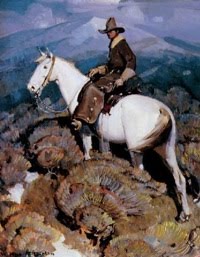







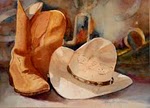


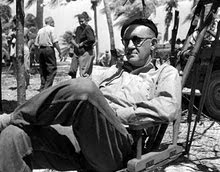



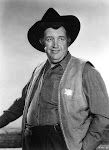


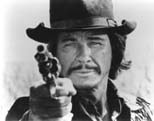
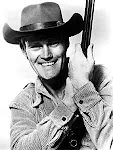

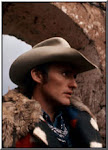






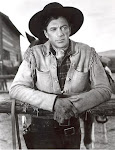

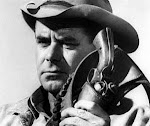
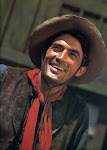

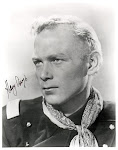
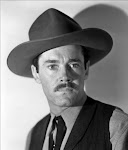
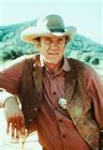


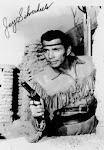
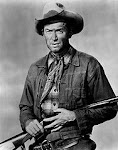
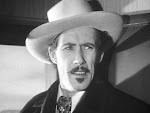
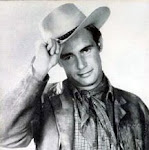
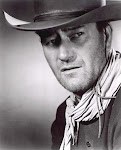
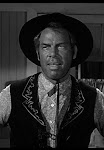



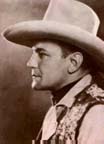
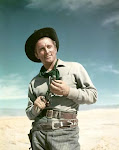
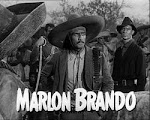



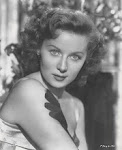
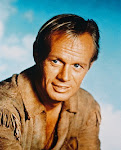
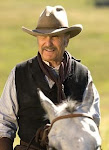

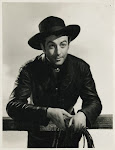


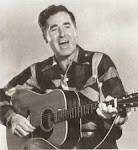
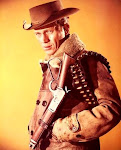
.jpg)
